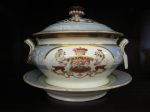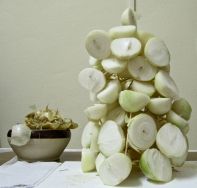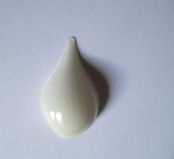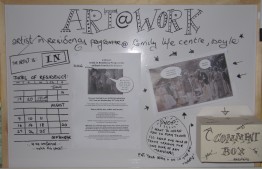I’m gradually getting to know more people thanks to a morning of dropping entry forms around the town for the calendar project. So far the response to the idea is positive so I’m curious to see what will be submitted.
 In the afternoon I had the pleasure of meeting with May Moran, author of ‘Executed for Ireland-The Patrick Moran Story’. The title of this post is actually the final line written by Patrick Moran on cards to his family before his death, one which May had originally planned to be the title of her book. Yesterday I said I was going to try to speed read the rest of the book that I hadn’t got to but in fact, it’s so engrossing I get caught up and so I’m still halfway through.
In the afternoon I had the pleasure of meeting with May Moran, author of ‘Executed for Ireland-The Patrick Moran Story’. The title of this post is actually the final line written by Patrick Moran on cards to his family before his death, one which May had originally planned to be the title of her book. Yesterday I said I was going to try to speed read the rest of the book that I hadn’t got to but in fact, it’s so engrossing I get caught up and so I’m still halfway through.
Chatting to May about the tale and her experience of researching and writing brought the subject to life and I expect to be glued right to the end.
My motive to meet with her comes from a fascination with accounts of escapes, smuggling and subterfuge of all sorts. Drama, suspense and excitement is a part of it. But I’m really interested in the relationships that are formed in order to successfully fulfill these missions; the networks that develop, the bond of collusion, the mutual trust that is demanded, the idealism contrasted with strategic pragmatism and the care of whatever precious cargo is being protected or transported whether it is information, objects (arms) or human life. Paddy Moran befriended people who became accomplices through shared ideals, common purpose, mutual regard, inter-dependancy or a familial bond that stretched beyond blood ties. So escape is different to running away, it is intrinsically reliant on collaboration of force or people but it is looking for a better destiny.
It is compelling to understand the systems that aim to regulate society yet individuals working together have the potential to subvert those systems and they do it all the time – one man’s black market is another man’s offshore account. Its a process of invention motivated by a perceived necessity and how it is justified is a question of perspective that tells us more about our culture, values and inequalities than those ‘systems’ ever could because it is the acid test of how successful and ‘fair’ they actually are in terms of self interest and common good. From another viewpoint, it is seeking an alternative that is more personally fulfilling and recognises the individual situation which is in a sense what I have found to be the ethos behind services provided at The Family Life Centre.
The rate of progress in the invention of tools of communication in such scenarios is particularly intriguing, after all wasn’t research into the development of radar greatly accelerated by the demands of WWII warfare. It is striking when ‘information’ becomes ‘intelligence’ through its relationship to power. For me it could be compared to an artistic process; it is creativity in a different form – one dictated by the present circumstance and available materials. In her book, May describes various creative means of bearing messages by the imprisoned, fugitive and exiled;
a message written inside a shirt collar
letters left on london trains by irish prisoners being transferred in the hope that they would be posted by someone, which they were
morse code between prison cells at curfew
symbolic allusions in song and poetry
public orations on streets, in churches
Think of the extreme difficulty in the faithful transfer of any information across a broad network coloured by differing attitudes, ideals and expectations, like a game of chinese whispers. Then appreciate the organisational achievement of common men and women to interprete, to communicate and to perform in solidarity and in stealth. Whether or not you identify with the cause, the ends is certainly something to behold, not unlike a work of art, the creation of which is often called a means of escape.
And what has May to say about making a work of art such as writing a book: “make it personal, its more interesting.”
 There was great satisfaction today in handing over my interviewee the transcription from our conversation yesterday in the form of a mini book. I came a across a line during our conversation that struck me; “Its so lovely for me to sit here talking to you, that you are interested in listening to me.”
There was great satisfaction today in handing over my interviewee the transcription from our conversation yesterday in the form of a mini book. I came a across a line during our conversation that struck me; “Its so lovely for me to sit here talking to you, that you are interested in listening to me.”


































